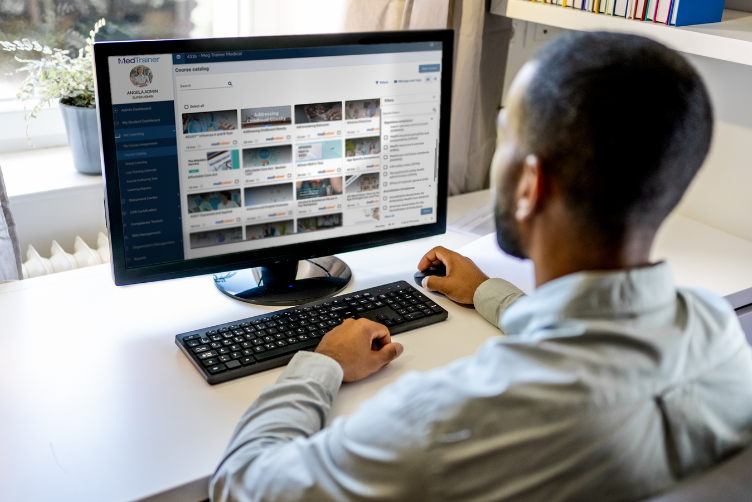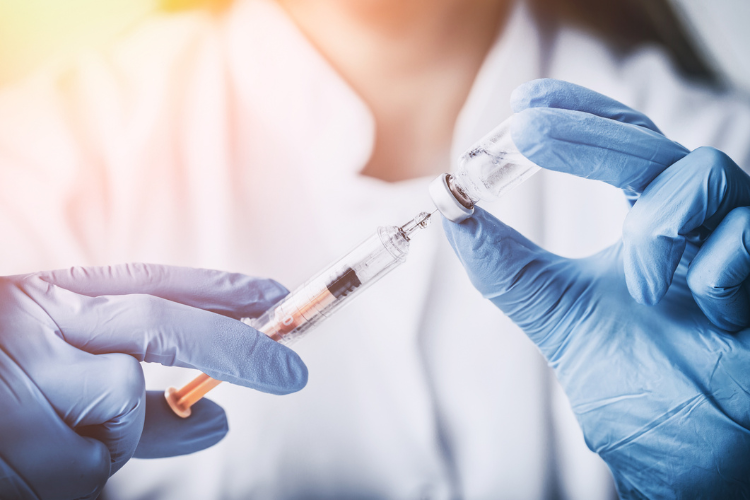Needlestick injuries are a serious occupational hazard in healthcare settings. They can lead to the transmission of bloodborne pathogens such as HIV, hepatitis B, and hepatitis C. Preventing needlestick injuries, healthcare facilities must prioritize proper compliance with regulations and guidelines and ensure their staff is trained and equipped to handle sharp objects safely and efficiently.
Prevention Begins With Compliance
One of the most widely-known compliance methods already in place by governing bodies is the Needlestick Safety and Prevention Act (NSPA) of 2000. This act requires healthcare facilities to implement safer needle devices and to maintain a sharps injury log to document needlestick incidents. Additionally, the Occupational Safety and Health Administration (OSHA) has established specific standards for needle safety, including proper disposal of sharp objects, use of personal protective equipment, and training for healthcare workers.
Prioritize Safety
To achieve and maintain sharps compliance, healthcare facilities have many avenues they can take. Focusing on staff and patient safety is paramount, and looking at needlestick prevention from an ergonomic lens is crucial. This can take many forms:
- Needleless systems use alternative methods, such as a blunt cannula or a spray nozzle, to administer medication or draw blood. These systems can help eliminate sharps in specific procedures and reduce the risk of needlestick injuries.
- Safety-engineered devices are medical devices designed with safety features that reduce the risk of needlestick injuries. Examples include safety syringes, retractable needles, and protective shields.
- One-handed recapping devices allow healthcare workers to recap needles with one hand, reducing the risk of injury from a needlestick.
- Automated medication dispensing systems can help reduce the need for manual preparation and administration of medications, reducing the risk of needlestick injuries.
- Healthcare facilities can change processes and procedures to reduce the risk of needlestick injuries. For example, healthcare workers learn to avoid needles and use safer devices when necessary.
- Healthcare facilities can improve sharps disposal methods by providing more containers in convenient locations, implementing policies for safe disposal, and ensuring proper disposal of sharps waste.
Ongoing Sharps Training
Organizations should regularly train staff on properly handling and disposing of sharp objects. Just as important, training should be given on what to do in the event of a needlestick injury:
- Wash the affected area with soap and water immediately.
- Notify your supervisor or the designated person responsible for incident reporting immediately.
- Seek immediate medical attention from a qualified healthcare provider. The provider will evaluate the injury and determine whether post-exposure prophylaxis (PEP) is necessary.
- If PEP is recommended, follow the treatment plan exactly as the healthcare provider prescribes.
- Cooperate with the facility’s incident reporting system and provide as much detail as possible about the circumstances of the injury.
- Participate in follow-up testing and monitoring as recommended by the healthcare provider.
- If there is a potential exposure to bloodborne pathogens, report the incident to the appropriate regulatory agencies (such as OSHA or the state department of health) as required.
Healthcare staff need to report all needlestick injuries promptly to ensure that appropriate measures are taken to prevent the spread of bloodborne pathogens and to protect the affected staff member from further exposure. Reporting incidents also helps to identify trends and areas for improvement in sharps safety and incident prevention.
Have Clearly Established Protocols
Hospital leaders must establish clear protocols and procedures for handling sharp objects and provide adequate resources for their safe disposal. A thorough standard operating procedure for needle and sharps usage should include the following guidelines:
- Always assume that all needles and other sharps are contaminated with bloodborne pathogens.
- Use personal protective equipment (PPE) such as gloves, gowns, and eye protection when handling sharps or touching bodily fluids.
- Never recap needles by hand. Use a one-handed scoop method or a safety device to recap needles.
- Dispose of sharps in puncture-resistant containers labeled with the biohazard symbol.
- Do not bend, break, or manipulate needles or other sharps by hand.
- Use safer needle devices, such as retractable needles, whenever possible.
- Report all needlestick injuries and exposures to your supervisor immediately.
- Seek medical attention and counseling as soon as possible after a needlestick injury or exposure.
- Attend regular sharps safety and needlestick prevention training to stay up-to-date with best practices and guidelines.
The Role of Incident Reporting in Needlestick Injuries
Incident reporting is essential to preventing needlestick injuries in healthcare settings. Reporting incidents helps to identify trends and areas for improvement, which can inform the development of new policies and procedures to reduce the risk of future injuries. Additionally, incident reporting allows healthcare workers to receive prompt medical attention and counseling and access to preventive measures such as post-exposure prophylaxis.
Reporting Requirements
Healthcare facilities are required by law to establish an incident reporting system for needlestick injuries. The requirements for reporting vary by state and regulatory agency. Still, healthcare workers must report any needlestick injuries to their supervisor or the designated person responsible for incident reporting within a specific timeframe (e.g., 24 hours).
Reporting Process
It typically involves completing a form or an online report that documents the details of the incident, including the date, time, location, and circumstances of the injury. Healthcare workers should also provide information about the type of sharp object involved, whether the object was contaminated, and the extent of the injury.
Follow-up and Monitoring
Healthcare facilities should have procedures for follow-up and monitoring of needlestick injuries. This may include medical evaluation and testing for bloodborne pathogens and counseling and support services for the affected staff member.
Use of Incident Reports
Incident reports are vital in identifying trends and areas for improvement in sharps safety and incident prevention. Healthcare facilities should review incident reports regularly to identify common factors in preventing needlestick injuries and develop strategies to reduce the risk of future injuries.
Confidentiality
Each incident should be confidential and only shared with those with a legitimate need to know. Healthcare facilities should establish policies and procedures to ensure the confidentiality of incident reports and to protect the privacy of the affected staff member.
MedTrainer: Your Partner in Safety and Compliance
MedTrainer is a valuable resource for healthcare facilities seeking to improve compliance and incident reporting. We offer a comprehensive incident reporting tool that simplifies reporting and tracking needlestick injuries. Our online courses and tracking tools are excellent for ensuring staff compliance and ensuring that healthcare workers are equipped with the knowledge and skills necessary for preventing needlestick injuries.

See how MedTrainer can streamline your compliance.
